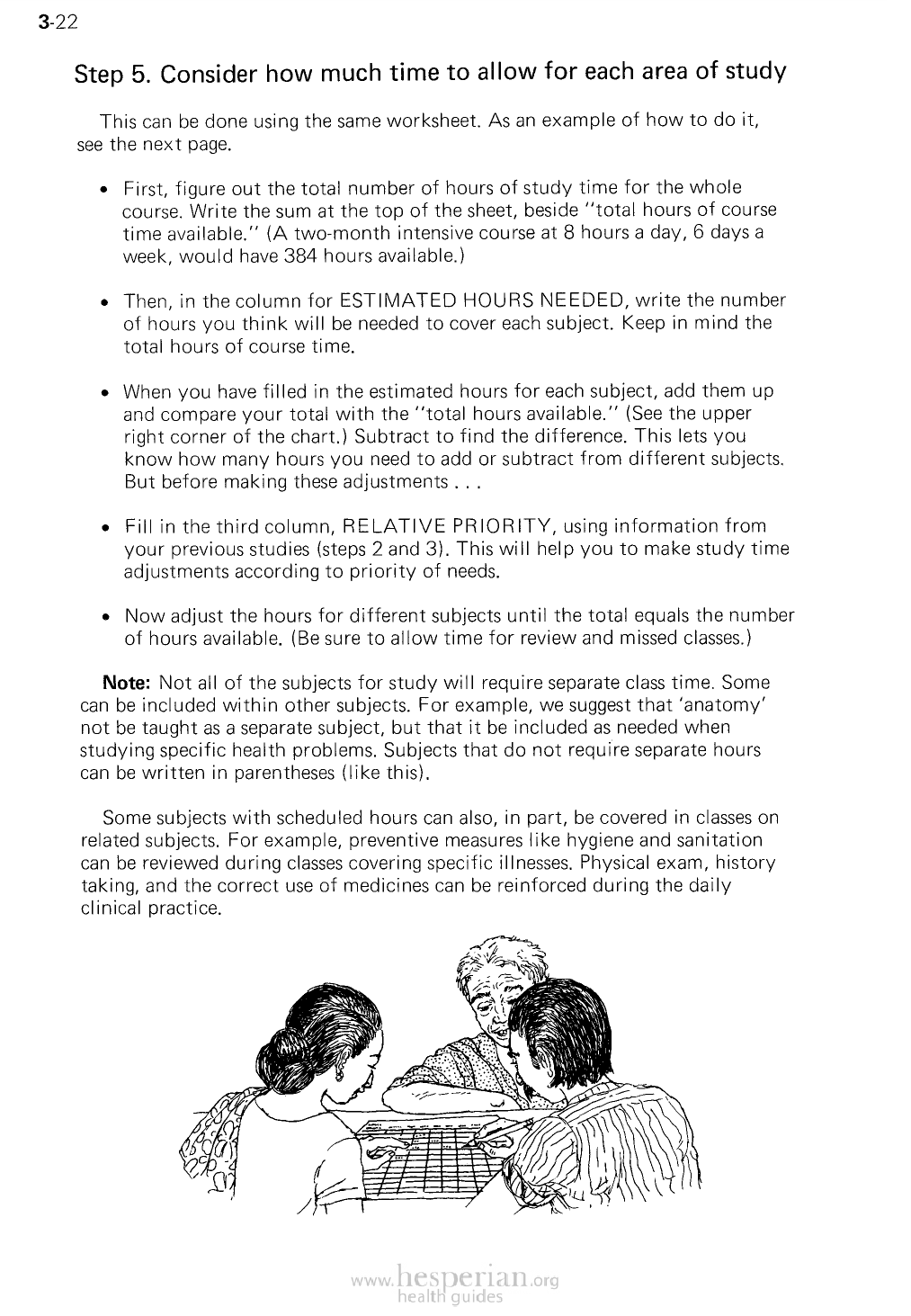
3-22
Step 5. Consider how much time to allow for each area of study
This can be done using the same worksheet. As an example of how to do it,
see the next page.
• First, figure out the total number of hours of study time for the whole
course. Write the sum at the top of the sheet, beside “total hours of course
time available.” (A two-month intensive course at 8 hours a day, 6 days a
week, would have 384 hours available.)
• Then, in the column for ESTIMATED HOURS NEEDED, write the number of
hours you think will be needed to cover each subject. Keep in mind the total
hours of course time.
• When you have filled in the estimated hours for each subject, add them up
and compare your total with the “total hours available.” (See the upper right
corner of the chart.) Subtract to find the difference. This lets you know how
many hours you need to add or subtract from different subjects. But before
making these adjustments . . .
• Fill in the third column, RELATIVE PRIORITY, using information from your
previous studies (steps 2 and 3). This will help you to make study time
adjustments according to priority of needs.
• Now adjust the hours for different subjects until the total equals the number of
hours available. (Be sure to allow time for review and missed classes.)
Note: Not all of the subjects for study will require separate class time. Some
can be included within other subjects. For example, we suggest that ‘anatomy’
not be taught as a separate subject, but that it be included as needed when
studying specific health problems. Subjects that do not require separate hours
can be written in parentheses (like this).
Some subjects with scheduled hours can also, in part, be covered in classes on
related subjects. For example, preventive measures like hygiene and sanitation
can be reviewed during classes covering specific illnesses. Physical exam, history
taking, and the correct use of medicines can be reinforced during the daily clinical
practice.